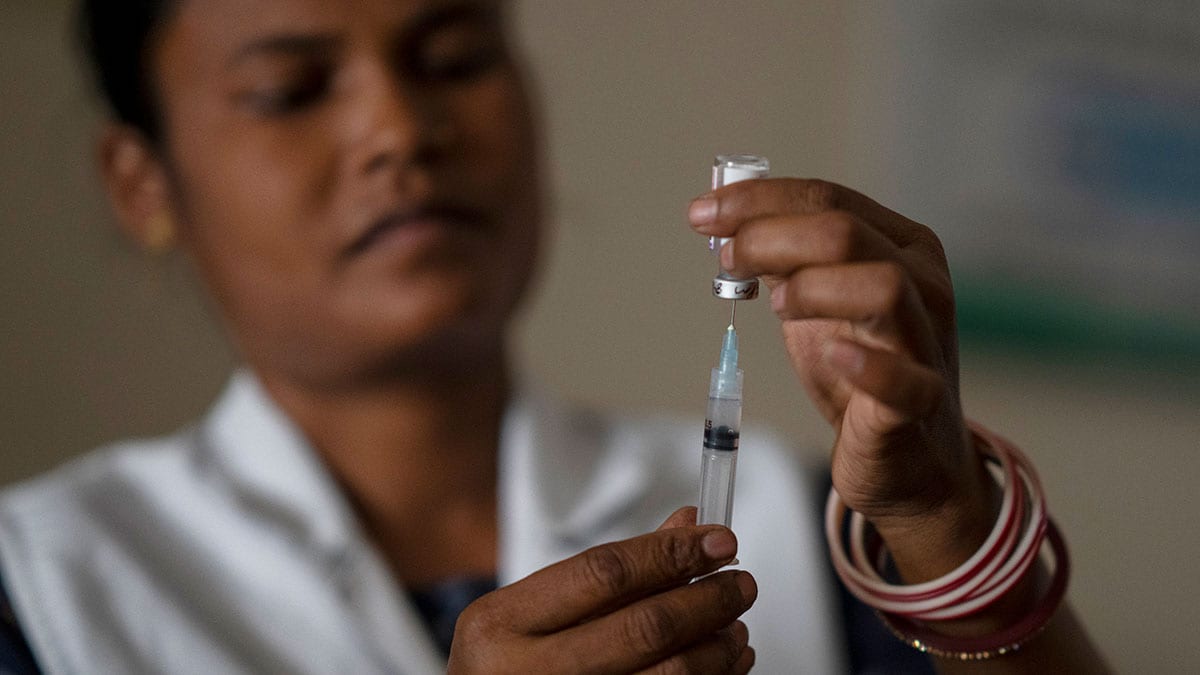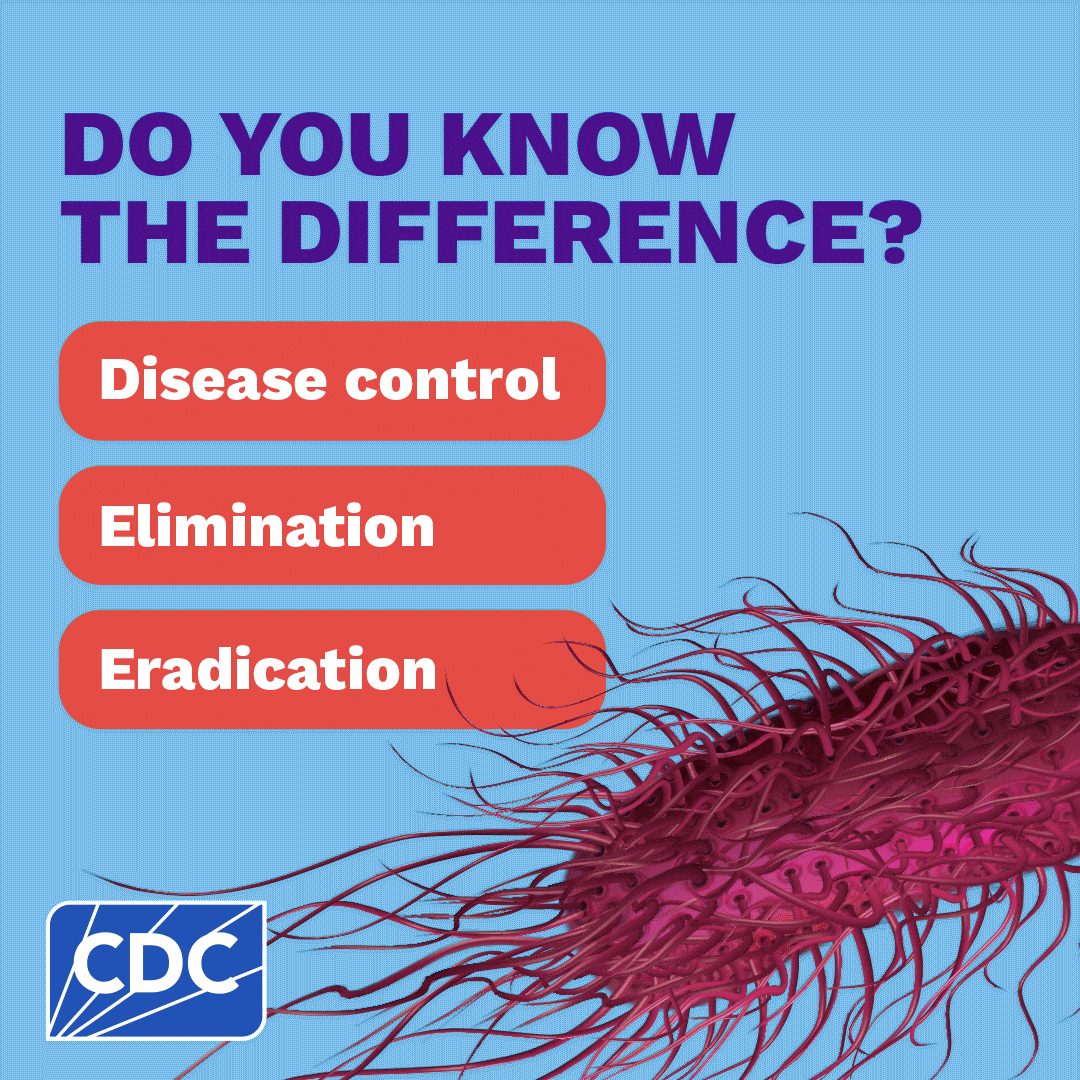What to know
CDC works to strengthen immunization systems and vaccination activities worldwide to reduce death and disabilities related to vaccine-preventable diseases (VPDs). Guiding efforts over the next decade, CDC's Immunization Program Impact Continuum reflects disease-specific targets to eradicate, eliminate, and control VPDs.

Definition of goals and terms

Goal: eradicate
Eradication is defined as the worldwide absence of a specific disease-causing agent in nature. Deliberate public health interventions may be discontinued where the agent (virus, bacterium) no longer presents a significant risk for human-to-human transmission or from other sources. To date, smallpox remains the only human disease that has been eradicated.
CDC works with partners to eradicate polio worldwide through sound science and effective programming.
VPDs with eradication targets
Goal: eliminate
Elimination of disease is categorized into two types:
- Elimination of VPD transmission is defined as the absence of a disease or infection caused by a specific agent (virus, bacterium) in a defined geographic area. Deliberate public health interventions, including vaccinations, must be continued to prevent the reemergence of these diseases.
- Elimination of a VPD as a public health problem is defined as an intensive intervention measure with a specific disease reduction target. When elimination is achieved, continued actions through disease detection and vaccinations are required to maintain the target and to advance the interruption of transmission of these diseases.
CDC works to eliminate the transmission of VPDs through more concentrated intervention measures, supporting sustainable programs to prevent the reemergence of a disease within communities, nations, and regions.
- With targets for elimination of transmission
- With targets for elimination as a public health problem
- Bacterial Meningitis (Streptococcus pneumoniae, Neisseria meningitidis)
- Cervical Cancer (Human papillomavirus)
- Cholera
- Hepatitis B
- Rabies
- Tetanus (maternal and neonatal)
- Bacterial Meningitis (Streptococcus pneumoniae, Neisseria meningitidis)
Goal: control
Control of vaccine-preventable disease is defined as the reduction of disease and death to low levels locally. To control the spread of these disease, CDC focuses on reducing illness and death from the highest burden VPDs, as well as pandemic prone VPDs, to protect communities.
VPDs with established control targets:
- Influenza
- Japanese encephalitis
- Tuberculosis
- Yellow fever
VPDs without established control targets with vaccines recommended in all country immunization schedules:
- Diphtheria
- H. influenza type b disease
- Pertussis
- Pneumococcal disease
- Rotavirus gastroenteritis
- Tetanus (neonatal)
VPDs without established control targets with vaccines recommended based on disease burden:
